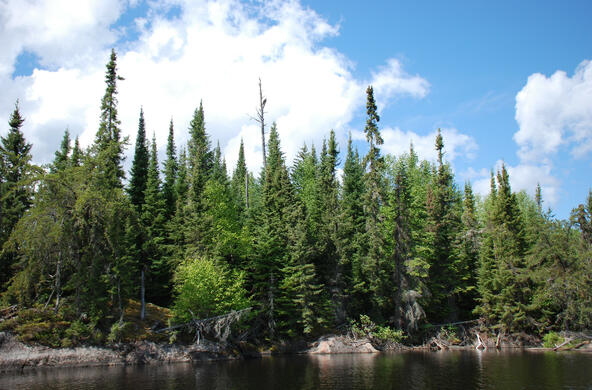Warming springtime temperatures bring another season of melting to the icepack on Greenland. Containing roughly 2,850,000 km3 of ice, in some places more than 3000 m thick, Greenland harbors the second largest ice mass on Earth—the largest being Antarctica. If Greenland were to melt completely, sea level would rise by about 7 meters (21 feet) flooding most coastal areas worldwide.
During the winter, snow and ice accumulate on Greenland, but during the summer, some melts away, largely at the edges, exposing more coastline. The annual waxing and waning of the icepack makes for heated arguments among those who study the impacts of global climate change. In recent years, many of these arguments have been settled by data from the GRACE satellite, which circles the Earth, measuring variations in the strength of Earth’s gravity as determined by the mass of material beneath each point. When the icepack melts, the gravitational strength declines, and the change is recorded by the satellite. From 2011 to 2020, the satellite recorded a loss of 222 to 286 km3/yr of ice, producing an annual contribution of 0.77 mm to sea-level rise.
Globally, sea level is rising about 3.5 mm/yr, so the contribution from Greenland is about 22% of the total. (The rest is contributed by other land-based glaciers and warming of the oceans’ waters). Sea-level rise of 3.5 mm/yr would add nearly 9 inches to the height of sea level by 2050—likely more as the rate of melting increases. The greatest rates of global warming are projected for high latitudes, including Greenland. Moreover, melting on Greenland exposes more land and less ice, which normally reflects incoming solar radiation back to space.
Already, the streets of Miami Beach are awash with seawater at high tide, and a recent news story reported that the Tampa Bay Rays are having trouble finding a site for their new baseball stadium that would not be subject to flooding from sea-level rise during its projected lifetime. One might think that Florida would be leading the charge to reduce the human impact on Earth’s climate, yet the electorate there seems to select politicians who scoff at the idea that humans are affecting the Earth’s climate.
Sea-level rise may be the most costly of the impacts of global climate change. Coupled with changes in the productivity of agriculture and the prevalence of human disease, we are headed for a major epoch in which coping with natural disasters saps economic vitality from populations worldwide.
References
Hsiang, S., R Kopp, A. Jina, J. Rising, M. Delgado, S. Mohan, D.J. Rasmussen, R. Muir-Wood, P. Wilson, M. Oppenheimer, K. Larsen, and T. Houser. 2017. Estimating economic damage from climate change in the United States. Science 356: 1362-1369.
Khan, S.. et al. 2022. Greenland mass trends from airborne and satellite altimetry during 2011 to 2020. Journal of Geophysical Research, Earth Surface. Doi: 10.1029/2021JF006505
Mouginot, J. et al. 2019. Forty-six years of Greenland ice sheet mas balance from 1972 to 2018. Proceedings of the National Academy of Sciences 116: 9239-9244.







